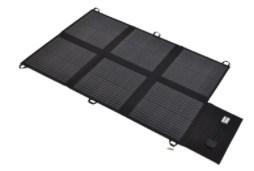The 120W Folding Solar Blanket is a versatile and portable solar energy harvesting solution that has been gaining popularity among outdoor enthusiasts, emergency responders, and those seeking sustainable power options. Its ability to convert sunlight into usable electricity is a key feature that sets it apart from traditional power sources. However, the performance of the 120W Folding Solar Blanket can be influenced by various factors, including the intensity and quality of the light it is exposed to. This article aims to explore how the 120W Folding Solar Blanket performs under different lighting conditions.
To begin with, it is essential to understand the basic principle behind the operation of the 120W Folding Solar Blanket. It is equipped with photovoltaic cells that convert sunlight into direct current (DC) electricity. The efficiency of this conversion process is dependent on the amount of light that the solar blanket receives. In ideal conditions, with direct sunlight, the 120W Folding Solar Blanket can reach its maximum power output, providing a consistent and reliable power source.
However, the real-world application of the 120W Folding Solar Blanket often involves exposure to varying lighting conditions. On cloudy days, the intensity of sunlight is reduced, which can affect the performance of the solar blanket. Studies have shown that the power output of the 120W Folding Solar Blanket can decrease by as much as 10-20% under cloudy skies. Despite this reduction, the solar blanket can still generate a significant amount of electricity, making it a viable option even in less-than-ideal conditions.
Another factor that can impact the performance of the 120W Folding Solar Blanket is the angle at which it receives sunlight. The solar blanket is designed to maximize power generation when positioned at an optimal angle relative to the sun. As the sun moves across the sky, the angle of incidence changes, which can lead to fluctuations in power output. To mitigate this issue, some 120W Folding Solar Blankets come with adjustable stands that allow users to adjust the angle of the blanket to match the sun's position.
The presence of dust, dirt, or other debris on the surface of the 120W Folding Solar Blanket can also reduce its efficiency. Regular cleaning and maintenance are recommended to ensure that the solar blanket's surface remains clear and free from obstructions that could hinder light absorption. Additionally, the use of a protective cover can help to prevent damage and maintain the cleanliness of the solar blanket.
In low-light conditions, such as during dawn, dusk, or in heavily shaded areas, the performance of the 120W Folding Solar Blanket is understandably diminished. However, advancements in solar cell technology have led to the development of high-efficiency solar blankets that can still generate a modest amount of power even in these conditions.
It is also worth noting that the 120W Folding Solar Blanket is designed to withstand a wide range of environmental conditions. It is built with durable materials that can endure exposure to sunlight, wind, and rain, ensuring that it remains functional and reliable in various settings.
In conclusion, the performance of the 120W Folding Solar Blanket is influenced by a variety of lighting conditions. While it excels in direct sunlight, it can still provide a significant amount of power even under less-than-ideal conditions. By understanding the factors that affect its performance and taking appropriate measures to optimize its use, users can ensure that their 120W Folding Solar Blanket remains a dependable and efficient power source.


